Table of Contents
You must have heard how important vitamins are since childhood. Remember how your parents used to prepare salads and add fruit and vegetables to your lunch boxes. They were right to do so, because these food groups are packed with beneficial substances. But you might be surprised to learn that you can find vitamins in many other foods that you often wouldn’t think to include in your diet. After reading this article, however, it should be clearer. We have prepared information about the most significant vitamins for the body. You will learn how they are classified, from what sources they are available, what they are for and what are the risks of vitamin deficiency. So let’s get to it.
What are vitamins anyway?
The term vitamin comes from the Latin word “vita”, which translates as life. These are essential substances that our body cannot produce on its own. That is why it is important to replenish them regularly. Each of us need them every day in quantities of a few tens of milligrams or units of micrograms. Vitamins can basically be described as so-called metabolic catalysts (substances that enter into chemical reactions), which regulate biochemical reactions in the body.
However, they can also be simply described as components that are involved in all metabolic processes in the body and their sufficiency is crucial for the proper functioning of the body. They influence growth, regeneration, digestion, energy extraction from ingested nutrients, the nervous system, immunity, and other essential processes.
You will learn about the following vitamins in the article:
Where do vitamins come from?
Vitamins are contained in plants which can even produce them themselves. But it is different in the human body. Apart from vitamin D, which can be considered a hormone that plays a crucial role in the health of the body, our body cannot produce most of them in the necessary quantities. We therefore need to ingest them regularly through our diet. However, it is true that our gut microbiome can help with the production of some vitamins, such as vitamin B12 or vitamin K. Interestingly, our body can also make a certain amount of vitamin B3 from the amino acid tryptophan. [2] [26]
However, if you are not able to meet the required amount, you are at risk of vitamin deficiency. Dietary supplements can also help with vitamin intake. It makes sense to take them, for example, if your diet does not contain enough fruit, vegetables and other whole foods, which are the main source of vitamins and other valuable micronutrients. Moreover, vitamin supplements are equally popular among people who, for whatever reason, cut out different food groups. This can include cereals, baked goods, legumes, meat, dairy, eggs and so on. Vitamin supplements are also often sought after by people on a reduction diet who may not be able to adequately ingest micronutrients through diet due to a low calorie intake. [1-2]
In the context of vitamins, we often come across three important concepts:
- Avitaminosis – a condition in which we suffer from a deficiency of one or more vitamins. For example, vitamin C deficiency causes scurvy and vitamin B1 deficiency causes beriberi (a disease of the nervous system). It can significantly endanger one’s health and even life.
- Hypovitaminosis – this is a milder form of avitaminosis that occurs more often than avitaminosis itself.
- Hypervitaminosis – a condition in which a person suffers from an excess of one or more vitamins.
Causes of hypovitaminosis and avitaminosis:
- lack of vitamins in the diet
- insufficient absorption of vitamins in the digestive system (e.g., due to disease)
- increased need for vitamins in the body (e.g., during increased physical stress, growth, convalescence)
- the effect of antinutrients (substances that affect the absorption or function of vitamins)
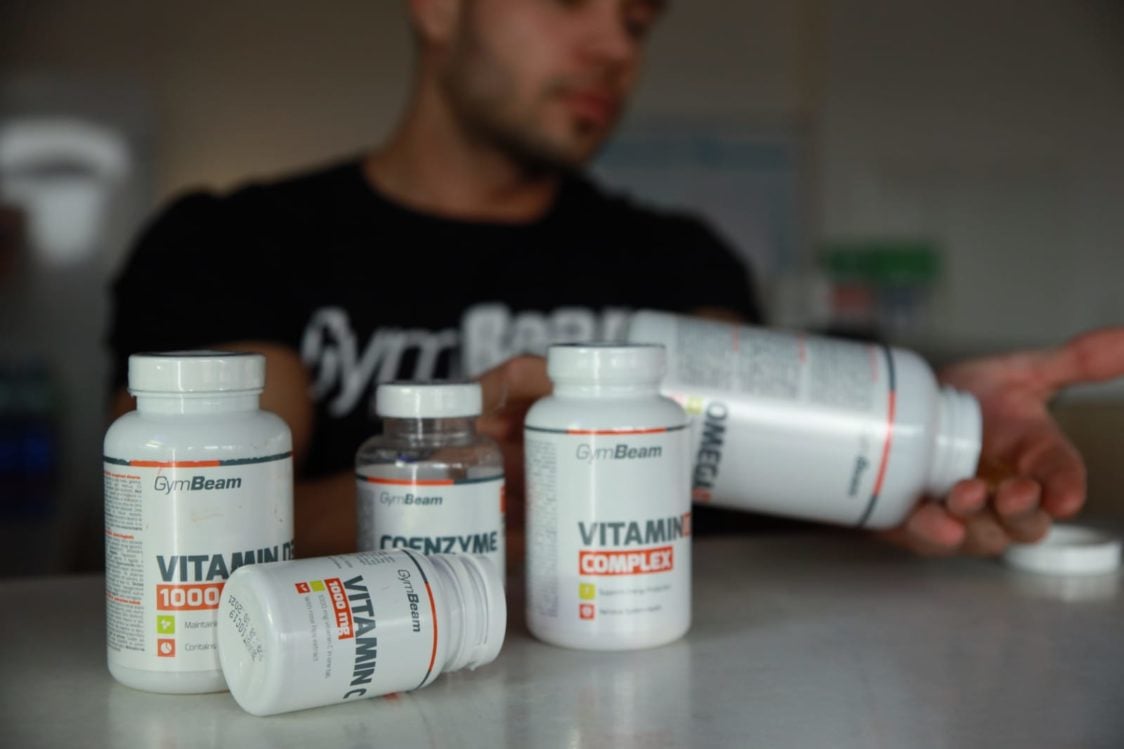
How do we classify vitamins?
Vitamins are most commonly classified as: [2]
- Fat-soluble vitamins – in the body, they travel bound to fat from the food you eat to the digestive tract, where they are absorbed through the intestinal wall. Fat assists the vitamins in this process. After successful absorption, these vitamins are stored, thus building up their reserves. They are stored, for example, in cell membranes, fatty tissue or the liver for future use. They can then be eliminated in smaller quantities, just as your body does with other fats.
- Water-soluble vitamins – they are water-soluble, easily absorbed and don’t even need any fat to do so. They simply enter the body, get absorbed, do their job and any excess is excreted in the urine. Unlike the fat-soluble group of vitamins, our body does not store them. However, a notable exception is vitamin B12, which our body stores in the liver, should last the average person 1-2 years. Thus, deficiency becomes apparent much later than as with other water-soluble vitamins. [16]
What affects the overall need for vitamins?
However, you also need to keep in mind that your daily vitamin requirements are influenced by several factors, including: [2-3]
- gender
- age
- medications
- energy intake
- stress
- level of physical activity
- pregnancy and menstruation
- genetics
- illness
- growth and development
Vitamins: functions, sources, recommended daily intake, signs of deficiency and excess
In order to understand the importance of vitamins, let’s take a closer look at their function in the body and the sources from which you can get them. Of course, we’ll also give you information on how to recognise an excess or deficiency of each vitamin. For practicality, we have also added recommended daily values.
We will outline the daily recommended values of the nutrients of interest according to the methodologies of the European Food Safety Authority (EFSA) and compare these values with the latest reference values of the German-speaking Nutrition Society (DACH). We always indicate the amount that is recommended for an average adult.
How to understand the units that are listed for vitamins?
When you look for vitamin content on the packaging of various products, you may see, for example, the letters IU, mg or μg. Do you know what they mean?
- μg (mcg) – microgram, 1 000μg is 1mg
- mg – milligram, 1g is 1000mg
- IU (International unit) is not based on weight, but depends on the amount of active substance, for example, with vitamin D – 40 IU corresponds to 1μg (2.5μg is 100 IU)
- mg NE/MJ – the equivalent of the substance in mg per 1000 kJ. If a vitamin is given as 0.8 mg NE/MJ, this means that for an average adult’s reference intake of 2000 kcal (8,368 kJ) you should take about 6.7 mg per day
You might be interested in these products:
Basic information on fat-soluble vitamins
The key property of vitamins A, D, E, K is that they are best absorbed together with fat from the diet. In the body, they are then stored in cell membranes, adipose tissue and the liver. This also distinguishes them from water-soluble vitamins, the excess of which is excreted in the urine. Thus, in extreme cases, there is a risk of toxicity from fat-soluble vitamins (through excessive intake and accumulation).
This can occur, for example, in people living above the Arctic Circle who consume large amounts of vitamin A rich foods such as liver. Did you know that an entire polar bear liver contains enough vitamin A to kill up to 52 adults? On the other hand, a deficiency of these vitamins only becomes apparent after a few weeks or months, as the body first reaches into the stores it has built up and then the deficiency sets in. [27]
Vitamin A (retinol)
Behind the name vitamin A is a group of retinoids including retinol, retinal and retinyl ester. Its sources are also the pigments alpha-carotene and beta-carotene (provitamin A, from which vitamin A itself is formed). Other carotenoids, such as lycopene or lutein, are not converted to vitamin A. Vitamin A is also an important antioxidant that helps protect cells from oxidative stress. In our diet, vitamin A is found in two forms – retinol and its esters in animal sources and provitamin A carotenoids in plant sources. In dietary supplements, vitamin A can be found in the form of retinols and its esters (e.g., retinyl acetate) or in the form of e.g., beta-carotene. The various forms of vitamin A are crucial for our eyesight. [2] [4–6] [20] [31–32]
- Functions: Vitamin A plays a role in cell specialisation and is also important for iron metabolism. In addition, it contributes to the maintenance of healthy mucous membranes, healthy skin and eyesight. It is also important for the immune system.
- Sources: liver and other offal, fish (fish oil), butter, cheese, egg yolks, carrots, pumpkin, sweet potatoes, green leafy vegetables (plant sources help especially with carotenoid supplementation)
- Recommended daily dose according to EFSA: 650μg for women, 750μg for men
- Recommended daily dose by DACH: 700µg for women, 850µg for most of the adult male population
- Signs of deficiency: difficulty seeing in dim light (night blindness), dry skin
- Signs of excess: nausea, headache, fatigue, loss of appetite, dizziness, and dry skin
You can learn more about how beta-carotene converts into vitamin A in our article Beta-Carotene – a Plant Source of Vitamin for Your Eyes and Skin.
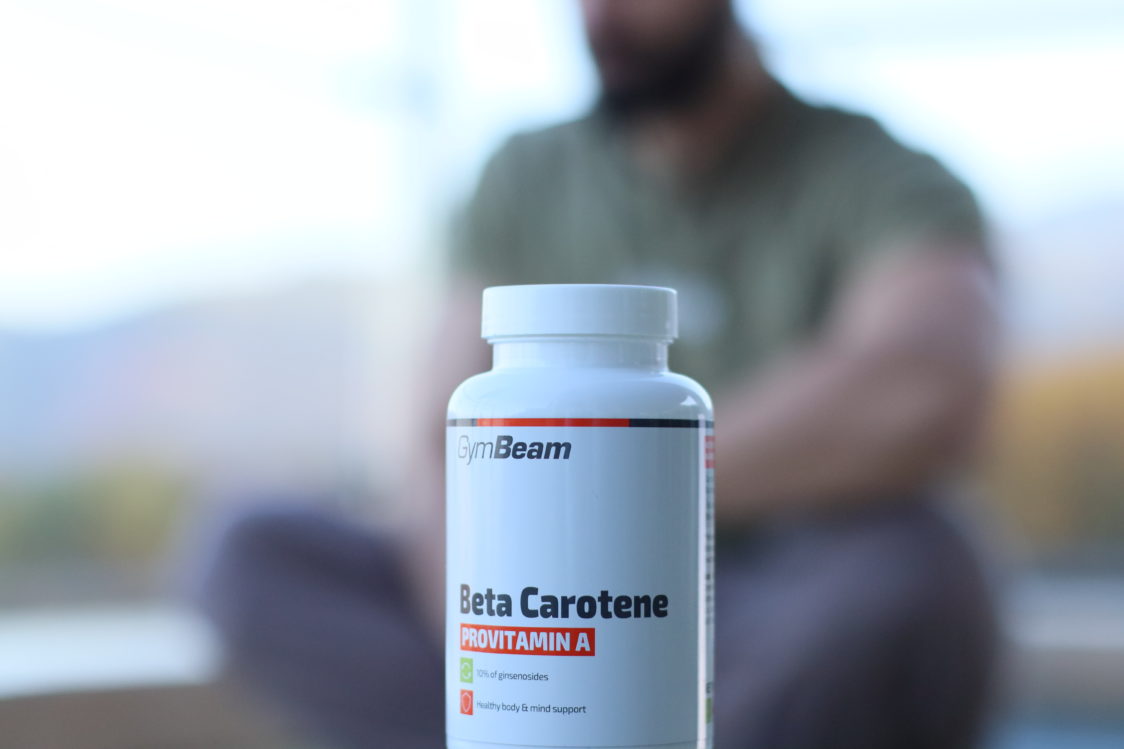
Vitamin D (calciferol)
Vitamin D or calciferol, is often reffered to as “sunshine” vitamin. Its deficiency is possible mainly in the winter months, when people expose their skin less to the sun and spend more time indoors. Vitamin D is found in two different bioavailable forms in foods and supplements.
Forms of vitamin D:
- Vitamin D2 (ergocalciferol) – of plant origin and less bioavailable
- Vitamin D3 (cholecalciferol) – of animal origin, the only plant sources of vitamin D3 are lichens, such as reindeer moss
If we were to compare vitamin D2 and D3, vitamin D3 would be more valuable to the human body, as it efficiently increases blood levels of vitamin D. [2] [4-6] [21] [28] [31]
- Functions: Vitamin D is involved in cell division in the body. In addition, it has a positive effect on the proper functioning of immunity, healthy teeth, bones, and muscles. However, it also contributes to the proper absorption of calcium and phosphorus, which is again related to proper bone function. The latter is particularly important for older people, who are at higher risk of falling and developing fractures.
- Sources: if you want to increase your body’s production of vitamin D, you need regular exposure to sunlight, which contains UVB rays. This is because it triggers a reaction in which the vitamin D precursor (dehydrocholesterol) is made into vitamin D3. But be aware that sunscreens block these rays. Likewise, intake of mushrooms, mackerel, sardines, tuna, fish oils, marine fish oil and liver can help.
- Recommended daily dose according to EFSA: 15μg
- Recommended daily dose according to DACH: 20μg (in the absence of endogenous formation from UV radiation from the sun)
- Signs of deficiency: can cause rickets, deformed bones, delayed growth and soft teeth in children, low bone density (osteomalacia, osteoporosis) and dental caries in adults
- Signs of excess: loss of appetite, nausea, vomiting, excessive thirst, weakness, joint pain, changes in blood calcium and phosphorus levels
If you want to learn more about vitamin D and its functions, you should not miss our article Vitamin D and All You Need to Know About It.
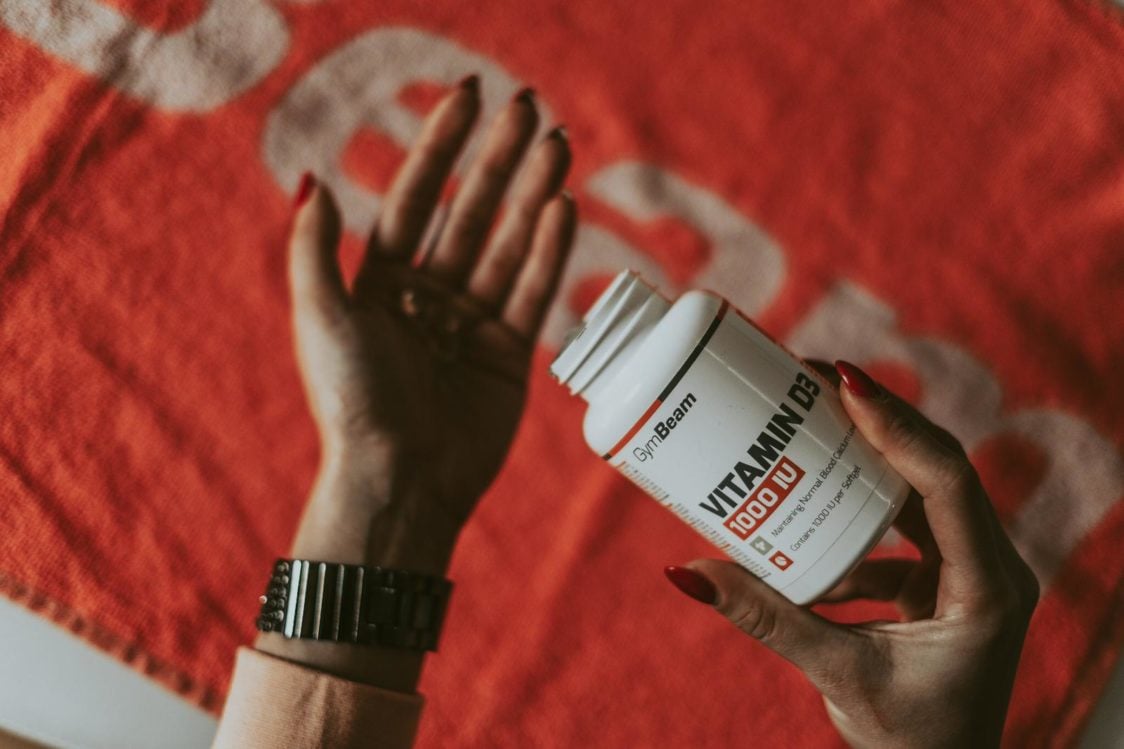
Vitamin E (tocopherols and tocotrienols)
There are actually 8 different compounds that fall under the name vitamin E, specifically 4 tocopherols and 4 tocotrienols. Each of them has different bioavailability for the body. These groups of compounds are characterised by significant antioxidant activity. [2] [4–6] [22–23] [31]
- Function: The main function of vitamin E is to protect cells from oxidative stress.
- Sources: green leafy vegetables, nuts and seeds, olives, avocados, egg yolks, vegetable oils, liver, whole grains
- Recommended daily dose according to EFSA: 11 mg for women, 13 mg for men
- Recommended daily dose according to DACH: 12 mg for most of the female population, 12-15 mg for men
- Signs of deficiency: muscle weakness, impaired vision, acne, muscle coordination problems, reproductive disorders (rare, more so in developing countries)
- Signs of excess: potential worsening of blood clotting
Vitamin K (phylloquinone, menaquinone)
Vitamin K can be found, for example, in animal and fermented foods, but it is also produced by bacteria in the human gut, helping our body to obtain a sufficient intake.
Forms of vitamin K:
- Phylloquinone (vitamin K1) is the main form of vitamin K, found mainly in green leafy vegetables
- Menaquinones (vitamin K2) are predominantly of bacterial origin and are present in small amounts in various animal and fermented foods. However, they are also produced by intestinal bacteria (microbiome).
Each of these forms dominates in a different type of food. [2] [4–6] [31]
- Functions: Vitamin K is essential for normal blood clotting and maintaining healthy bones.
- Sources: broccoli, green leafy vegetables, parsley, brussel sprouts, green beans, peas, spinach, liver, beef, and pork
- Recommended daily dose according to EFSA: 70μg
- Recommended daily dose according to DACH: 60–65μg for women, 79–80μg for men
- Signs of deficiency: tendency to bleed, reduced blood clotting, increased risk of osteoporosis
- Signs of excess: not determined, people taking blood thinners (e.g., Warfarin) should not have large fluctuations in their intake of this vitamin for the medication to work properly, and should especially avoid excessive intake.
If you want to learn more about vitamin K and its functions, you should not miss our article Vitamin K2: an Unknown Vitamin with Many Health Benefits.

Basic information on water-soluble vitamins
As the name implies, these vitamins dissolve in water, so they don’t need fat to do so. All B vitamins and vitamin C belong to this group. Typically, the body cannot store them in large quantities. This is why regular daily intake is so important. Some vitamins in this group are heat sensitive. For example, if you cook meat or vegetables in water, use the broth as well, so that you do not deplete yourself of valuable vitamins.
Vitamin B1 (thiamine)
Vitamin B1 or thiamine is one of the essential nutrients that are necessary for our body. It is number one because it was the first vitamin to be isolated. Our body needs it, for example, to produce energy in the form of ATP (from essential nutrients) that fuels our daily activities, whether it is sporting or normal activities. A deficiency of this vitamin can cause beriberi disease, which is characterised by extreme fatigue, problems of the cardiovascular system or the nervous, muscular and digestive systems. [2] [4–6] [7–8] [29] [31]
- Functions: Vitamin B1 is involved in metabolism, which is important for energy production. In addition, it has an effect on the proper functioning of the nervous system and the psyche. Last but not least, it contributes to proper functioning of the heart.
- Sources: sunflower seeds, mushrooms, beans, lentils, spinach, peas, tuna, whole grains, nuts, legumes, pork, liver, yeast
- Recommended daily dose according to EFSA: 0.1mg NE/MJ (for an intake of 2000 kcal this is 0.84mg)
- Recommended daily dose according to DACH: 1mg for women, 1.1 – 1.3mg for men
- Signs of deficiency: burning feet, weakness of limbs, swelling, rapid heartbeat, lack of appetite, nausea, fatigue, and digestive problems
- Signs of excess: not determined

Vitamin B2 (riboflavin)
Vitamin B2 or riboflavin is a yellow natural pigment that is characterised by temperature stability. It participates in the reactions of enzymes in the antioxidant system. Most foods that contain vitamin B2 are of animal origin. In the case of supplementation of larger doses of vitamin B2, you may observe, for example, that your urine has a yellow colour. This is perfectly natural and is just a matter of eliminating the excess of this vitamin from the body. When you expose it to UV light, riboflavin will fluoresce.
Vegetarians and vegans should pay extra attention to this vitamin. You can learn more about the nutrients that vegans lack in our article Which Nutrients Do Vegans Lack Most Often and How to Supplement Them? [2] [4–6] [31]
- Functions: Vitamin B2 in the body contributes to metabolism which is important for energy production. In addition, however, it affects our psyche, proper iron metabolism and also protects cells from oxidative stress. Besides this, it contributes to the maintenance of healthy mucous membranes, red blood cells, healthy skin, good eyesight and also helps to reduce fatigue and exhaustion.
- Sources: yeast, liver, milk, yogurt, eggs, meat, fish, legumes, cereal sprouts
- Recommended daily dose according to EFSA: 1.6mg
- Recommended daily dose according to DACH: 1-1.1mg for women, 1.3-1.4mg for men
- Signs of deficiency: cracked lip corners, conjunctivitis, sensitivity to light, inflammation in the mouth, loss of appetite, fatigue, inflammation of the skin and mucous membranes, hair loss, thyroid problems, reproductive problems, degeneration of the liver and nervous system
- Signs of excess: liver damage
Vitamin B3 (niacin)
Vitamin B3 or niacin (formerly also nicotinamide or vitamin PP) is important for every cell in our body. All tissues that absorb niacin subsequently convert it into its major metabolically active form called the coenzyme nicotinamide adenine dinucleotide (NAD). The latter is important for over 400 enzymes in the body, more than any other vitamin-derived coenzyme. NAD can then also be converted into another active form, which is called the coenzyme nicotinamide adenine dinucleotide phosphate (NADP). It is also significant to mention the fact that niacin can be partially synthesized from the amino acid tryptophan. [2] [4–6] [9] [31]
- Functions: Even vitamin B3 has an effect on proper metabolism, which is important for energy production. In addition, it also affects the nervous system, the psyche and helps to reduce fatigue and exhaustion. It contributes to maintaining healthy skin and keeping mucous membranes healthy.
- Sources: beef liver, chicken breast, legumes, potatoes, nuts, yeast, grain coatings, cereal sprouts, asparagus, peanuts, brown rice, corn, green leafy vegetables, potatoes, lentils
- EFSA recommended daily dose: 1.6mg NE/MJ (for an intake of 2000 kcal this is 13.4mg)
- Recommended daily dose according to DACH: 11-13mg for women, 14-16mg for men
- Signs of deficiency: dermatitis (pellagra), diarrhoea, dementia, gastritis
- Signs of excess: facial flushing, itching, digestive problems
Vitamin B5 (pantothenic acid)
Vitamin B5 or pantothenic acid is an essential nutrient that occurs naturally in virtually all foods of plant and animal origin. Its main function in the human body is the synthesis of coenzyme A and acyl carrier protein. Both of these components are important for fatty acid synthesis and energy metabolism. This vitamin occurs naturally in virtually all foods, so its deficiency is relatively rare. [2] [4–6] [10] [31]
- Functions: Vitamin B5 contributes to the proper synthesis and metabolism of steroid hormones vitamin D and some neurotransmitters. In addition, it helps to reduce fatigue, exhaustion and supports healthy mental performance. Likewise, it contributes to proper metabolism important for energy production.
- Sources: beef liver, lean meat, chicken breast, tuna, eggs, broccoli, lentils, peas, avocado, whole wheat, mushrooms
- Recommended daily dose according to EFSA: 5mg
- Recommended daily dose according to DACH: 5mg
- Signs of deficiency: tingling feet, nervous disorders, hair loss, headaches, fatigue, irritability, sleep disturbances
- Signs of excess: nausea, heartburn, diarrhoea
Vitamin B6 (pyridoxine)
Vitamin B6 is also known as pyridoxine. It is the generic name for three (or respectively six) compounds with vitamin B6 activity. Specifically, these are pyridoxal, pyridoxine, pyridoxamine, and their respective phosphorylated forms. Two more compounds can be formed from one substance, so there is no need to keep track of the specific intake of each compound. In the body, vitamin B6 is involved, in the breakdown of glycogen (which is necessary for energy for athletic performance), the functioning of the nervous system, the production of neurotransmitters and steroid hormones. [2] [4-6] [11] [31]
- Functions: it contributes, for example, to the regulation of hormonal activity, the proper functioning of immunity and the optimal production of blood cells. In addition, it helps to reduce fatigue and exhaustion, supports function of the psyche, the nervous system and also contributes to metabolism important for energy production.
- Sources: lean meat, eggs, legumes, yeast, offal, whole wheat, brown rice, green leafy vegetables, sunflower seeds, potatoes, bananas, trout
- Recommended daily dose according to EFSA: 1.6mg for women, 1.7mg for men
- Recommended daily dose according to DACH: 1.4 mg for women, 1.6 mg for men
- Signs of deficiency: skin and digestive system inflammation, insomnia, confusion, nervousness, depression, anaemia, irritability
- Signs of excess: painful neurological symptoms
Vitamin B7 (biotin, vitamin H)
Vitamin B7 may also be known under the name vitamin H or biotin. It’s no coincidence that the word biotin is similar to the word bios, which originated in Ancient Greece and translates to life. Accordingly, you may remember that it also affects, for example, the growth of the embryo. In most cases, this vitamin is bound to protein in the diet. It is important in the body because it impacts the proper function of the metabolism of all macronutrients. [2] [4–6] [12–13] [31]
- Functions: Biotin has an effect on the proper metabolism of macronutrients and also on the function of the psyche. It is especially popular among women as it is involved in maintaining healthy hair or skin.
- Sources: beef liver, kidney, yeast, eggs (yolk), green leafy vegetables, nuts, wholemeal bread, avocado, raspberries, cauliflower, carrots, banana, and salmon; this vitamin is widely distributed in foods of both plant and animal origin
- Recommended daily dose according to EFSA: 40μg
- Recommended daily dose according to DACH: 40μg
- Signs of deficiency: brittle nails, neurological problems, skin inflammation, hair loss
- Signs of excess: not determined
Vitamin B9 (folic acid, folate)
Vitamin B9 is sometimes also called folic acid or folate (formerly also vitamin Bc or folacin). However, they are not one and the same.
- Folate is a naturally occurring form of vitamin B9. It is the name of a group of related compounds with similar nutritional properties. Thus, it is naturally occurring in foods, added to foods, or available as a dietary supplement.
- Folic acid is a synthetic form of vitamin B9 and many foods are fortified with this vitamin as are the most dietary supplements.
Vitamin B9 plays an important role in the body as it is involved in the synthesis of nucleic acids during blood formation. It is of special importance during foetal development and growth. This is also why women often increase their intake of this vitamin during pregnancy. This may help reduce the risk of foetal cleft defects. [2] [4-6] [14-15] [31]
- Functions: This vitamin contributes to the growth of germ tissue during pregnancy. It also helps with reducing fatigue, exhaustion and supporting the immune system. It also plays an important role in the process of cell division and affects blood formation.
- Sources: liver, green leafy vegetables, asparagus, broccoli, brussels sprouts, citrus fruits, legumes, whole grains, avocados, peanuts
- Recommended daily dose according to EFSA: 330μg
- Recommended daily dose according to DACH: 300μg
- Signs of deficiency: anaemia, low white blood cell count, low platelet count, weakness, weight loss, cracking of the corners of the mouth and lips, diarrhoea, nervous system defects in newborns, intestinal damage
- Signs of excess: For now, there is no consistent scientific data that clearly describes the effects of excess of this vitamin.
Vitamin B12 (cobalamin)
Vitamin B12 is also known as cobalamin. The word “cobalt” in the name is not accidental. This is because there is a connection where this trace element is part of the structure of vitamin B12. It binds to proteins in the diet and must be released before it can be absorbed. This starts with food in the mouth being mixed with saliva and continues on through the digestive tract. Unlike other B vitamins, there’s a longer-term supply of vitamin B12 in the liver. The body is able to store up to 2,000 times the amount it really needs each day. A deficiency can therefore take several years to manifest itself. Its sources are exclusively animal products and foods enriched with this vitamin. Therefore, vegetarians and vegans can become deficient of this vitamin. [2] [4–6] [16–17] [31]
- Functions: Vitamin B12 has an effect on the proper functioning of the immunity, psyche and nervous system. In addition, it also influences the production of red blood cells and plays a role in the process of cell division.
- Sources: liver, trout, salmon, tuna, eggs, dairy, meat
- Recommended daily dose according to EFSA: 4μg
- Recommended daily dose according to DACH: 4μg
- Signs of deficiency: manifested by neurological problems, inflammation in the mouth, anaemia, fatigue, degenerative changes in the nervous system
- Signs of excess: no specific risks of high intake have been identified, vitamin B12 is generally considered safe even in high doses
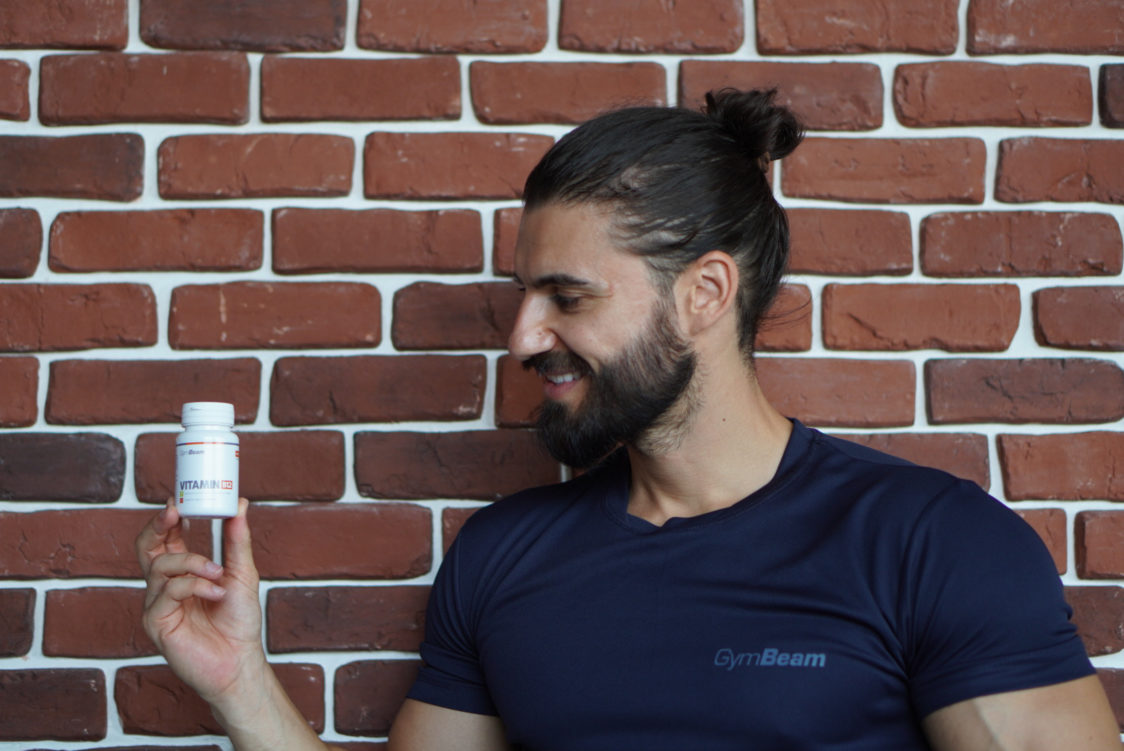
Where are the other B vitamins?
You may have noticed that there are some numbers missing from the list of B vitamins. This is because some of them are classified as so-called pseudo vitamins. They are therefore not vitamins in the true sense of the word. They are similar in chemical structure to a vitamin, but they are not essential substances. [25] [31]
Vitamin C (ascorbic acid)
Vitamin C or ascorbic acid is a water-soluble vitamin that is essential for the proper functioning of the body. The best way to get this vitamin into the body is by eating raw fruit and vegetables. Lemon is often recommended as a great source of vitamin C, but did you know that peppers have more of this vitamin? However, as long as you eat the optimal amount of any fruit or vegetable, you don’t have to worry about a deficiency. [2] [4–6] [18–19] [31]
But it was different, for example, for sailors, especially in the 15th century, who depended mainly on meat for their long voyages at sea. Unfortunately, such a monotonous diet is not only poor in the necessary vitamin C. Since they did not know what this could cause, they unwittingly increased their risk of scurvy. The disease claimed many victims amongst them, but fortunately we now know how to prevent it. Scurvy manifests itself mainly by bleeding from the gums, under the skin and into the internal organs. In today’s advanced population, the disease is very rare, but in the past a large number of people died from it. [2] [4-6] [18-19] [31]
- Functions: Vitamin C is primarily associated with its beneficial effects on immunity, the nervous system and the psyche. However, these are not its only functions. In addition, it is also involved in protecting cells from oxidative stress, reducing fatigue, iron absorption and the proper formation of collagen (the main protein that makes up connective tissue). The latter is important for skin and the proper function of teeth, bones, cartilage, and blood vessels.
- Sources: most fruit and vegetables
- Recommended daily dose according to EFSA: 95mg for women, 110mg for men
- Recommended daily dose according to DACH: 95mg for women, 110mg for men
- Signs of deficiency: bruising, swelling, dry hair and skin, hair loss, joint pain, slow healing of wounds, brittle bones, decreased immunity, increased fatigue, bleeding gums, in case of deep deficiency – scurvy, which in extreme cases can end in death
- Signs of excess: diarrhoea, higher risk of kidney stones
Learn more about vitamin C in our article Vitamin C: Everything You Need to Know About It Before It’s Too Late.
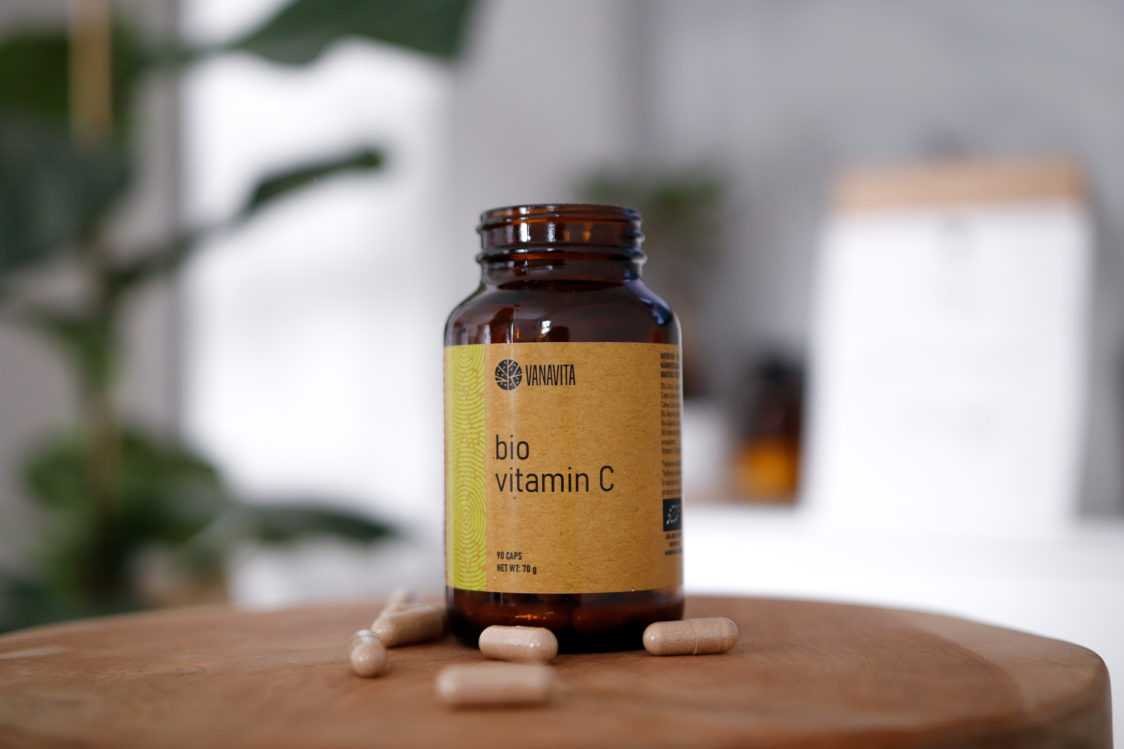
In what forms can we take vitamins?
It is up to each of you to decide how to get vitamins into your body. The best option is to cover the recommended daily intake with a varied and balanced diet that plays with all colours. This can be a problem though for people in a calorie deficit or individuals who avoid a certain food group for whatever reason, or who eat a diet of primarily highly processed foods. These can be very poor in vitamins and other micronutrients. In this case, consider including high-quality supplementation. This is available in many forms, so there is something for everyone.
Forms of vitamin supplements:
- Capsules and tablets – you don’t need to prepare anything, just swallow them, and you can take them anywhere with you.
- Effervescent tablets – usually have a great taste and can be worked in as a part of your water intake.
- Powdered supplements – like effervescent tablets, they can work as a great addition to your water intake.
- Gummy candies – ideal for those who do not like to swallow tablets. They can also work as a healthy treat when you are feeling hungry. But be careful of the quantity so you don’t eat the whole package in one sitting.
- Drops – very easy to use. You can drip them on a spoon, directly into your mouth or add them to a drink. Stand out for their fast absorption.
- Spray – again stands out for its easy dosing and quick absorption. Just squirt into your mouth and that’s it.
- Oil – perfect especially for fat-soluble vitamins. It can be consumed on its own, or in combination with foods.
- Intravenous administration – a form of vitamins that belongs in the hands of specialists.

What to watch out for with vitamins?
When it comes to vitamins in everyday life, you don’t have to be particularly careful about how you combine them. It will be enough to make sure that you are not deficient in one or more vitamins, so that you do not get into a state of hypovitaminosis. Equally, however, it is not a good idea to overdo it with vitamins and try to take too much at any cost. This could lead to hypervitaminosis, which can have similar symptoms to some diseases.
Pregnant women should also beware, as specific values for vitamin intake are often set in general recommendations. It is therefore certainly not the case that they should double their intake of everything with a baby on the way. They could then experience negative consequences. For example, excessive intake of vitamin A has teratogenic effects in the first sixty days after conception. This means that the development of the organs of the embryo may be impaired. For a better idea, let’s see by what percentage the need for the vitamins in question will increase during pregnancy, according to the EFSA.
By what percentage does the need for vitamins increase during pregnancy?
- Vitamin A: 7.7%
- Vitamin D: 0%
- Vitamin E: 0%
- Vitamin K: 0%
- Vitamin B1: 0%
- Vitamin B2: 18.8%
- Vitamin B3: 0%
- Vitamin B5: 0%
- Vitamin B6: 12.5%
- Vitamin B7: 0%
- Vitamin B9: 81.8%
- Vitamin B12: 12.5%
- Vitamin C: 10.5%
If you want to learn more about how to choose vitamins, you should not miss our article Liposomal Vitamins and Minerals – Exaggerated Hype or Revolutionary Discovery?
What should you remember?
As you can see in our vitamin guide, optimal intake of these substances is very important for the body, as they have a direct influence on the proper functioning of the body. In case your body is deficient in vitamins or, on the contrary, has an excess, rest assured it will probably let you know.
Therefore, try not to overestimate or underestimate your intake and stick to the recommended amount. The great advantage is that you can choose a form that suits you according to your preferences. With sufficient intake of all the necessary nutrients, you may well start to see some of your long-standing health (e.g., fatigue) or aesthetic problems (reduced quality of hair or nails) disappear.
We hope that this article has helped you find your way around vitamins a little better. If so, we’d love it if you could share it with your friends so they too can expand their knowledge of the importance of vitamins.
[1] Nancy Clark – Sports Nutrition Guidebook
[2] All About Vitamins & Minerals – https://www.precisionnutrition.com/all-about-vitamins-minerals
[3] J B Schwartz – Vitamin intake, recommended intake, and gender differences – https://pubmed.ncbi.nlm.nih.gov/11324234/
[4] Dietary Reference Values for the EU – https://multimedia.efsa.europa.eu/drvs/index.htm
[5] Deutsche Gesellschaft für Ernährung e.V. – https://www.dge.de/
[6] Commission Regulation (EU) No 432/2012 of 16 May 2012 establishing a list of permitted health claims made on foods, other than those referring to the reduction of disease risk and to children’s development and health – http://data.europa.eu/eli/reg/2012/432/oj
[7] Victor R. Squires – The Role of Food, Agriculture, Forestry and Fisheries in Human Nutrition - Volume IV
[8] Thiamin – Vitamin B1 – https://www.hsph.harvard.edu/nutritionsource/vitamin-b1/
[9] Niacin – https://ods.od.nih.gov/factsheets/Niacin-HealthProfessional/
[10] Pantothenic Acid – https://ods.od.nih.gov/factsheets/PantothenicAcid-HealthProfessional/
[11] Vitamin B6 – https://ods.od.nih.gov/factsheets/VitaminB6-HealthProfessional/
[12] All you should know about biotin deficiency – https://www.medicalnewstoday.com/articles/320462#risk-factors
[13] Biotin – Vitamin B7 – https://www.hsph.harvard.edu/nutritionsource/biotin-vitamin-b7/
[14] Folate – https://ods.od.nih.gov/factsheets/Folate-HealthProfessional/
[15] Why do we need biotin (vitamin B7) – https://www.medicalnewstoday.com/articles/287720
[16] Vitamin B12 – https://ods.od.nih.gov/factsheets/VitaminB12-HealthProfessional/
[17] Ramkripa Raghavan et al. – Maternal Multivitamin Intake, Plasma Folate and Vitamin B 12 Levels and Autism Spectrum Disorder Risk in Offspring – https://pubmed.ncbi.nlm.nih.gov/28984369/
[18] Vitamin C – https://ods.od.nih.gov/factsheets/VitaminC-HealthProfessional/
[19] Nilay S. Sawant – Effect of Microwaving, Sunlight, and Heat Temperature on Vitamin C – https://csef.usc.edu/History/2011/Projects/J2014.pdf
[20] Vitamin A – https://ods.od.nih.gov/factsheets/VitaminA-HealthProfessional/
[21] Vitamin D – https://ods.od.nih.gov/factsheets/VitaminD-HealthProfessional/
[22] Vitamin E – https://examine.com/supplements/vitamin-e/
[23] Vitamin E – https://ods.od.nih.gov/factsheets/VitaminE-HealthProfessional/
[24] Sabina Bastos Maia et al. – Vitamin A and Pregnancy: A Narrative Review – https://www.ncbi.nlm.nih.gov/pmc/articles/PMC6470929/
[25] Pseudovitamin – https://examine.com/supplements/pseudovitamin/
[26] Ian Rowland et al. – Gut microbiota functions: metabolism of nutrients and other food components – https://www.ncbi.nlm.nih.gov/pmc/articles/PMC5847071/
[27] David Landy – Pibloktoq (hysteria) and inuit nutrition: Possible implication of hypervitaminosis A – https://www.sciencedirect.com/science/article/abs/pii/0277953685900875
[28] Vitamín D – https://examine.com/supplements/vitamin-d/
[29] Bernaciková, M., Masarykova univerzita, & Fakulta sportovních studií. – Regenerace a výživa ve sportu (1. vyd.)
[30] Thiamin – https://ods.od.nih.gov/factsheets/Thiamin-HealthProfessional/
[31] Klimešová, Steizer – Fyziologie výživy
[32] Will you die if you eat a polar bear’s liver? – https://www.sciencefocus.com/the-human-body/will-you-die-if-you-eat-a-polar-bears-liver/


Add a comment